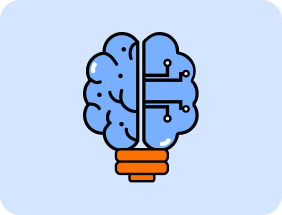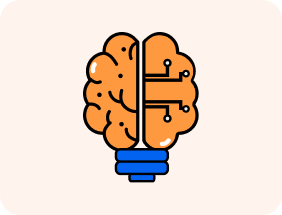Why Global Classrooms Are the Future of Education
Education is no longer limited by four walls, a chalkboard, and a teacher standing in front of the class. With technology, globalization, and innovation in learning strategies, today’s students are already part of a much bigger learning ecosystem—the global classroom.
A globalized classroom connects students across countries, cultures, and disciplines, creating opportunities to learn not just academic content but also skills for thriving in a connected world. From online global classrooms to cultural exchange activities, students are becoming global citizens without leaving their homes.
In this blog, let’s explore why classroom global education is the future, the benefits of global collaboration in the classroom, and how AI and the future of education are shaping this new reality.
The Idea of a Global Classroom
A global classroom is an interconnected learning environment where students from different regions can collaborate, share perspectives, and solve problems together. Unlike traditional classrooms that are tied to geography, these learning spaces are bound by the internet and powered by digital platforms.
Key Features of Globalized Classrooms:
Students collaborate across borders using technology.
Teachers design activities for classroom global education, like joint projects, cultural exchanges, and debates.
Learners gain access to diverse perspectives and real-world issues.
Online tools enable live discussions, video calls, shared assignments, and peer-to-peer mentoring.
In essence, a global classroom is not just about learning subjects, it’s about learning with the world. Platforms like YMetaconnect make this possible by combining collaborative learning with personalized strategies.
Why Are Global Classrooms Becoming Essential?
The idea of a global classroom is not just a trend, it is becoming a necessity. The world around us is changing quickly, and education has to keep up. The rise of technology, global jobs, and new ways of working are pushing schools and students to think beyond borders.
Globalization of Work
In today’s world, careers are no longer limited to one city or even one country. Many companies now hire people from different parts of the world. Remote work, freelancing, and international projects are common. This means students need to be comfortable working with people from other cultures. A global classroom gives them early practice in cross-cultural collaboration.
Access to Diverse Knowledge
One of the best parts of globalized classrooms is the chance to learn directly from people who live in different regions. For example, students can study history from someone who lives where it actually happened or talk about climate change with peers who see its effects daily. This makes learning real and relatable.
Future-Ready Skills
Success in the 21st century requires more than just subject knowledge. Skills like communication, teamwork, empathy, and adaptability are now just as important. A global classroom naturally trains students in these areas because they must work with peers who may think or learn differently.
Technology as a Bridge
Technology makes this possible. With video calls, digital whiteboards, and shared online platforms, connecting with students from another country is as simple as logging in. What used to be impossible is now easy and accessible for classrooms everywhere.
In short, global classrooms prepare students for the real world. They connect knowledge, skills, and people, making learning more practical and future-focused.
Benefits of Global Collaboration in the Classroom
The benefits of global collaboration in the classroom are far-reaching. Both students and teachers experience growth beyond academic knowledge.
For Students
Cultural Awareness: Students learn about different traditions, values, and perspectives.
Critical Thinking: Exposure to global issues makes them analyze problems more deeply.
Communication Skills: Interacting with peers worldwide builds confidence and adaptability.
Empathy: Working with others from different backgrounds fosters understanding.
For Teachers
Innovative Pedagogy: Teachers can design new activities for classroom global education like debates, cultural projects, and research collaborations.
Professional Growth: Global classrooms help teachers learn teaching methods from peers across countries.
Access to Resources: Teachers share lesson plans, tools, and strategies to enrich learning.
For the Learning Ecosystem
Stronger Communities: Global classrooms encourage cooperation rather than competition.
Problem-Solving: Students from diverse regions bring unique solutions to shared global challenges, like climate change or social inequality.
Future Workforce Preparation: Learners graduate with the ability to work in multinational teams.
Activities for Classroom Global Education
To make global classrooms effective, schools and platforms integrate specific activities for classroom global education. These activities go beyond textbooks and foster collaboration and creativity.
Virtual Exchange Programs:
Students pair with peers from another country to discuss culture, language, or global issues.
Collaborative Projects:
Classes work together on shared assignments like environmental research or technology prototypes.
Global Debates and Discussions:
Students discuss topics like climate change, AI ethics, or world history, hearing diverse perspectives.
Storytelling and Peer Teaching:
Students share their local experiences and even teach each other cultural practices.
Digital Pen Pals:
Traditional pen pals evolve into video calls, shared blogs, or podcasts.
Research Across Borders:
Learners co-author papers or presentations with peers worldwide.
These activities not only improve learning skills but also build lifelong connections.
The Role of Technology in Building Online Global Classrooms
Technology is the backbone of the online global classroom. Without it, global collaboration would not be possible. It is technology that bridges the distance between countries, cultures, and time zones, making learning truly borderless.
Video Conferencing Tools
Platforms like Zoom, Google Meet, and Microsoft Teams allow students to connect in real time. Live discussions, group projects, and even cultural exchanges become easy with face-to-face interaction, no matter where students live.
Learning Management Systems (LMS)
LMS platforms store lessons, organize resources, track progress, and make communication between teachers and students smoother. They act as a central hub where global learners can collaborate effectively.
Collaborative Apps
Tools such as Google Docs, Padlet, and Miro give students the chance to co-create assignments, brainstorm, and share ideas in real time. These apps encourage teamwork and creativity.
AI-Powered Tools
From personalized feedback to real-time translation and adaptive learning, AI tools break barriers of language and learning pace, ensuring inclusivity.
Technology ensures that the future of online education is not just possible but also scalable, giving every student equal access to global learning opportunities.
AI and the Future of Education
Artificial Intelligence (AI) is already transforming classrooms, but in a globalized classroom, its role becomes even more powerful. AI helps overcome challenges of diversity, personalization, and accessibility, making education more effective.
Personalized Learning: Every student learns differently. AI customizes lessons and study materials based on an individual’s strengths and weaknesses. In diverse global classrooms, this ensures no student is left behind.
Language Translation: Real-time translation powered by AI removes one of the biggest barriers in global education, language. Students can interact freely with peers across the world without worrying about communication gaps.
Assessment and Feedback: AI tools can evaluate quizzes, assignments, and even writing tasks quickly. This allows teachers to spend more time reflecting, mentoring, and engaging with students rather than being stuck in repetitive grading.
Virtual Tutors: AI-driven chatbots and assistants support students outside class hours. Whether it’s a math doubt or a science concept, learners can access instant help, anytime and anywhere.
The integration of AI into classrooms ensures that the future of education is inclusive, efficient, and learner-centered. In global classrooms, AI will be the key to connecting diverse minds and making collaboration seamless.
Challenges of Global Classrooms and How to Overcome Them?
The idea of a global classroom opens exciting opportunities for students to learn together across countries. But like any new approach, it also comes with challenges. The good news is that with the right strategies, these challenges can be solved.
Digital Divide
Not every student has the same access to technology or the internet. This creates a gap between learners who can participate easily and those who cannot.
Solution: Schools and governments must invest in affordable internet services, provide devices where needed, and create digital access programs so every student can join.
Time Zones
When students are spread across different countries, scheduling live sessions can be difficult. A class convenient for one group may happen at midnight for another.
Solution: Flexible scheduling works best. Recorded lectures, asynchronous group activities, and rotating session times ensure that no one is left out.
Language Barriers
Even though translation tools exist, they often miss cultural meaning or tone, which can cause misunderstandings.
Solution: Both teachers and students should practice cultural sensitivity. Learning basic greetings or phrases in each other’s languages and using simple, clear language during discussions can help bridge the gap.
Teacher Training
Teachers may not always be trained in global teaching strategies. Leading a class across cultures and time zones requires new skills.
Solution: Continuous teacher development programs can provide training on technology use, global collaboration, and inclusive teaching approaches.
Curriculum Alignment
Different education systems follow different goals, making it hard to keep lessons relevant for all.
Solution: Schools and institutions should collaborate to design integrated curriculums with shared learning outcomes. This way, lessons stay meaningful for every student, no matter their background.
In short, global classrooms are worth the effort. With the right planning and support, these challenges can turn into opportunities for creativity, inclusivity, and innovation. Instead of seeing them as obstacles, schools can use them as a chance to make education stronger and more accessible worldwide.
Why Global Classrooms Are the Future of Education?
The future of education is not just about books and exams, it’s about connection, collaboration, and creativity. A global classroom reflects this change by bringing together students from different countries, cultures, and perspectives.
One of the biggest strengths of globalized learning is preparing students for a global workforce. Careers today demand cross-cultural communication, teamwork, and adaptability. By learning alongside international peers, students naturally develop these future-ready skills.
Global classrooms also help build empathy and respect across cultures. When students share experiences, they begin to see the world through different perspectives, which encourages tolerance and understanding.
Another important advantage is real-world problem-solving. Students can work on projects that address global challenges like climate change, sustainability, or technology ethics, gaining practical insights.
With the support of AI and the future of online education, these classrooms will become more inclusive and accessible. Soon, global classroom education won’t be optional, it will be essential for developing leaders who can thrive anywhere in the world.
Wrapping Up
Education is no longer about memorizing facts for exams. It’s about preparing for life in a connected, ever-changing world. Globalized classrooms, powered by technology, collaboration, and AI, are leading this transformation.
By engaging in online global classrooms, students don’t just learn subjects; they learn how to live, work, and thrive in a global community. The benefits of global collaboration in the classroom prove that when learners connect across borders, education becomes more meaningful, practical, and future-ready.
The future of online education is not isolated learning but global learning. The classrooms of tomorrow will not be bound by geography but by curiosity, empathy, and shared goals. And that is why global classrooms are not just the future, they are the present stepping stone to building a better, more connected world.
Read More


 Learner
Learner Mentor
Mentor Organisation
Organisation
 Learner
Learner Mentor
Mentor Organisation
Organisation










